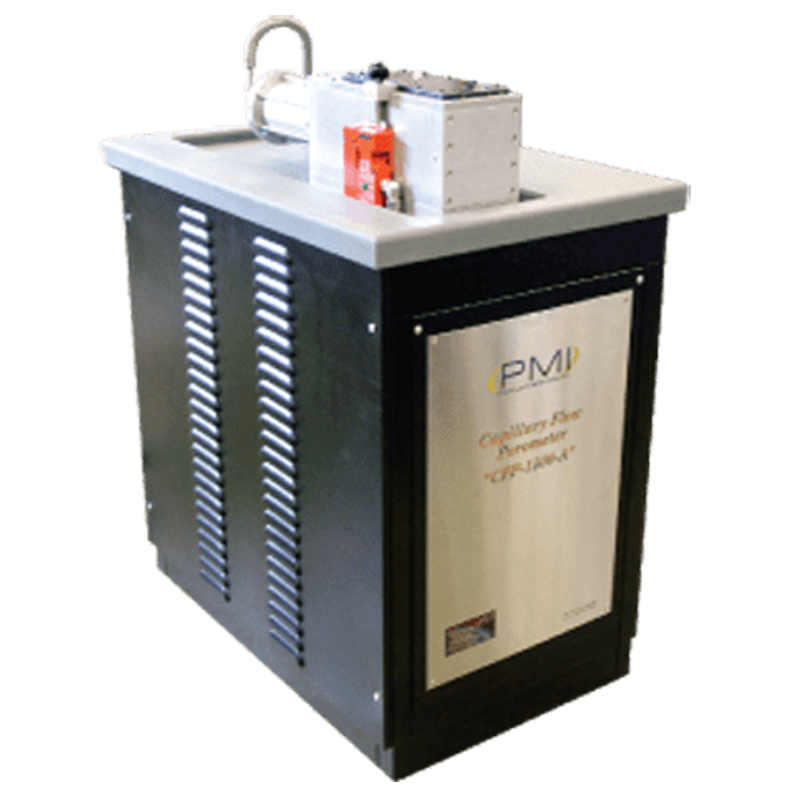- pmiappofficial
- May 24, 2021
- 3 min read
The Filter Cartridge Tester and the Advanced Permeability Porometer are cutting-edge pieces of machinery that have streamlined how industrial testing methods were carried out. These up-to-date devices have helped productions achieve efficient and effective operations.
But you need to know which of these machines will suit your industry best. Undoubtedly, both of these porometers are different in their primary process, so you must understand their functionality. By that, you'll be able to determine which one best fulfills your needs.
So, today, let's compare these two and establish the key differences to understand which one is better.
Advanced Permeability Porometer? Or The Filter Cartridge Tester?
Advanced Permeability Porometer

The Advanced Permeability Porometer is used for quantifying mean flow pore diameter, pore diameter range, pore size distribution, pore throat diameter, and bubble point. These are mainly used for quality control and R&D in industries including fuel cells, hygienic products, water purification, food, healthcare, household, battery, and filtration.
The tested samples include powders, ceramics, filter media, paper, membranes, health care products, and battery separators. First, the liquid is allowed to fill the sample's pores, and then a non-reacting gas relocates the liquid from these pores. The gas compression and flow rate through the wet and dry samples are measured precisely then. Moreover, the gas pressure must remove the liquid from the pores for the gas flow to work.
The purpose of the Advanced Permeability Porometer is to regulate the permeability of porous solids. Gas is involuntarily flown through the test sample, giving specific measurements of steady-state flow rate, and consistent pressure drops provide data for calculation. The calculated permeability uses Frazier, Gurley, and Rayl units.
Automated Filter Cartridge Tester

The Automated Filter Cartridge Tester is an entirely automated through-pore analysis machine that runs a series of tests for filter cartridges of various geometries. These machine tests include gas, liquid, bubble point, filter integrity, pore size distribution, Frazier permeability, and mean pore size.
The sample chamber can allow holders with lengths and diameters from several inches to several feet. The test starts when the operator first places the filter on the lower half of the filter holder. Once that's done, the pneumatic cylinder lowers the upper half of the filter holder, and liquid is passed through the filter.
Concurrent measurements of the downstream and the upstream concentration levels are calculated. The particles that have penetrated are determined and valued from the ratio of these two particular readings.
Furthermore, the pressure transducers determine flow rate and filter resistance. Pressure and porometer readings are taken between every test to regulate the background values and zero offsets. The microprocessor automatically compresses these values when computing the outcomes. Once the entire test is complete, the filter holder will automatically open.
There are additional pressure capabilities that this machine possesses. Firstly, it can reach from 500 psi up to 2000 psi with unique microflow technology. The pressure accuracy is generally 0.15% of the reading.
The resolution is 1:60,000 F.S, and the maximum Pore diameter is 200 µm. The default pore diameter is 0.013 µm with 0.002 µm if you go with the Capillary Condensation Flow Porometer. The Automated Filter Cartridge Tester accepts wetting liquids that include mineral oil, water, oil, PorewickTM, alcohol, GalwickTM, and SilwickTM.
Other additional features include a real-time graphical display for test status checking. Moreover, the maximum length for a majority of the tests is around 10 minutes per sample. The machine also accepts filter cartridges based on many varying geometries. There's also a transparent sample chamber that allows visual confirmation.
Finalizing the differences,
Both these engineering marvels are highly revered in the R&D and quality assurance industries. The Advanced Permeability Porometer measures pore throat diameter, bubble point, etc. In comparison, the Automated Filter Cartridge Tester runs a long chain of tests to determine cartridge integrity. Whichever you think suits your industrial requirements is the better choice. So, be wise.


